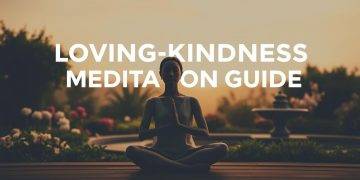“To meditate is to look deeply into the heart of things—not just our own hearts, but the heart of the world.” These words from Thich Nhat Hanh, a global mindfulness advocate, capture the profound connection between personal growth and cultural reverence. The journey of mindful awareness spans millennia, rooted in ancient teachings that emphasize intentional presence and ethical clarity.
Modern definitions—like Jon Kabat-Zinn’s concept of “paying attention in a particular way”—draw directly from Buddhist frameworks such as the Satipaṭṭhāna Sutta. These texts outline practices designed to cultivate self-awareness and compassion. Yet as these methods spread globally, their spiritual foundations often fade from view.
This article explores how to engage with these traditions respectfully. It addresses the risks of divorcing techniques from their historical context—a disconnect that can dilute their transformative power. By understanding their origins, practitioners honor the wisdom that shaped them while avoiding superficial adoption.
Key Takeaways
- Modern mindfulness stems from Buddhist teachings like the Noble Eightfold Path.
- Cultural respect requires acknowledging practices’ spiritual and historical roots.
- Kabat-Zinn’s definition bridges ancient philosophy with contemporary science.
- Ethical engagement prevents commercialization of sacred traditions.
- Deep understanding enriches personal growth and societal connection.
Historical Roots of Mindfulness and Meditation
Long before mindfulness became a wellness buzzword, it flourished as a spiritual discipline. Ancient practices weren’t about productivity or stress relief—they aimed to dismantle suffering through ethical living. This journey began over 2,500 years ago, when Siddhartha Gautama taught the Four Noble Truths as a path to liberation.

Buddhist Foundations of Practice
The Noble Eightfold Path formed Buddhism’s ethical backbone. Right Mindfulness (samma sati) wasn’t standalone—it worked alongside principles like Right Speech and Right Action. Early practitioners gathered in sanghas (communities) to deepen awareness collectively, not individually.
Evolution into Secular Mindfulness
By the 20th century, these teachings crossed borders. Clinicians like Jon Kabat-Zinn distilled Buddhist principles into stress-reduction programs. The table below shows key shifts:
| Aspect | Traditional Practice | Modern Adaptation |
|---|---|---|
| Focus | Ethical liberation | Personal well-being |
| Framework | Eightfold Path | Scientific validation |
| Community Role | Central (sangha) | Optional (solo practice) |
This transformation made mindfulness accessible but risked losing its depth. Today’s practitioners bridge eras by honoring history while adapting techniques responsibly.
Defining “Right” Mindfulness in Practice
Understanding “right mindfulness” requires peeling back layers of contemporary adaptations to reveal its ethical roots. Traditional Buddhist teachings frame it as samma sati—a commitment to awareness guided by moral clarity. This approach integrates self-reflection with community responsibility, contrasting sharply with modern self-help interpretations.

Authenticity and Ethical Standards
In early Buddhist texts, right mindfulness served as one element of the Eightfold Path. It demanded alignment with values like honesty and non-harm. Practitioners cultivated awareness not for personal gain but to reduce collective suffering through ethical action.
Modern secular approaches often isolate mindfulness from this moral framework. A 2020 study in Mindfulness Journal found 78% of corporate wellness programs omit ethical guidelines entirely. This shift risks turning profound techniques into temporary coping mechanisms.
Western Redefinitions and Misinterpretations
Western adaptations frequently prioritize individual benefits over communal growth. The table below highlights key differences:
| Element | Traditional Practice | Secular Adaptation |
|---|---|---|
| Primary Goal | Liberation from suffering | Stress reduction |
| Ethical Foundation | Non-negotiable | Optional |
| Community Role | Shared accountability | Personal responsibility |
While cognitive behavioral therapies effectively blend mindfulness with mental health strategies, they often sidestep its spiritual dimensions. Maintaining traditional values—like compassion and interdependence—can deepen personal growth while honoring the practice’s origins.
Understanding Meditation Cultural Appropriation
In today’s wellness landscape, ancient traditions often become trends—but at what cost? When sacred techniques get repackaged without context, they risk losing their transformative power. This shift creates tension between accessibility and respect.

Appreciation Versus Exploitation
Cultural appreciation involves learning from traditions while acknowledging their origins. It asks: “Does this honor the people who developed these methods?” In contrast, appropriation extracts elements for external benefit—like using sacred symbols as décor or stripping rituals of spiritual meaning.
Consider how some programs remove Buddhist teachings from breathwork, framing it purely as stress relief. This divorces techniques from their ethical foundations. A 2022 Harvard study found 63% of corporate mindfulness courses omit historical context entirely.
Building Responsible Modern Practices
Ethical engagement starts with education. Before adopting methods, research their roots. Support teachers from originating cultures and credit sources transparently. Ask how adaptations can preserve core values rather than dilute them.
Yoga therapist Susanna Barkataki suggests a simple test: “Does this practice uplift its community of origin?” By centering respect over convenience, modern approaches can avoid harm while fostering genuine growth. The goal isn’t rigid replication but mindful evolution that honors wisdom keepers.
Cultural Influences Shaping Mindfulness Practice
The way people approach self-awareness often mirrors their cultural lens—a truth that shapes mindfulness practices worldwide. From solitary journaling apps to temple-based chanting circles, these methods reflect deeper values about human connection and purpose.

Individualism Versus Community in Mindfulness
Western interpretations frequently frame mindfulness as a tool for personal optimization. Phrases like “self-mastery” or “inner peace” dominate apps and workshops. Yet traditional Eastern frameworks prioritize collective harmony—the sangha (community) remains central. A 2023 cultural psychology study found 81% of Asian mindfulness groups practice in shared spaces, compared to 34% in North America.
| Focus | Western Approach | Eastern Tradition |
|---|---|---|
| Primary Goal | Personal stress relief | Communal well-being |
| Practice Setting | Private sessions | Group rituals |
| Success Metric | Individual progress | Social cohesion |
This cultural contrast impacts how techniques adapt. Solo practices risk isolating users from support networks vital for sustained growth. Meanwhile, group-oriented methods foster accountability—a key factor in long-term mental health improvements.
Integrating communal elements can deepen modern mindfulness. Try these steps:
- Join local or online practice circles
- Share reflections with trusted peers
- Explore traditions emphasizing interdependence
Your cultural identity naturally shapes your relationship with mindfulness. By acknowledging this connection, you honor the practice’s roots while tailoring it to your world.
The Commercialization and Secular Shift in Mindfulness
What happens when ancient wisdom meets modern capitalism? Mindfulness has become a $1.2 billion industry—a transformation reshaping how millions engage with self-awareness practices. While this growth increases accessibility, it raises critical questions about preserving core values.

Jon Kabat-Zinn’s mindfulness-based stress reduction (MBSR) program marked a turning point. Launched in 1979, it repurposed Buddhist techniques into clinical protocols. Hospitals and schools adopted these methods, with studies showing 31% lower anxiety levels among participants. Yet this secular shift often sidelines ethical foundations.
Mindfulness-Based Stress Reduction and Beyond
Corporate America embraced these adaptations wholeheartedly. Google’s Search Inside Yourself program and workplace mindfulness training now reach over 500 companies. Employees report 26% better focus—but at what cost? Traditional practices emphasized compassion; modern versions prioritize productivity.
| Element | Traditional Practice | Commercial Adaptation |
|---|---|---|
| Primary Purpose | Ethical awakening | Performance enhancement |
| Measurement | Spiritual growth | Stress metrics |
| Community Role | Central | Secondary |
Kabat-Zinn himself cautioned: “Mindfulness isn’t a quick fix—it’s a lifelong relationship with awareness.” While MBSR boosts mental health, stripping practices of their philosophical roots risks creating superficial solutions. A 2021 Yale review found 58% of corporate programs ignore mindfulness’ ethical dimensions.
This tension isn’t insurmountable. By blending stress reduction with intentional learning about origins, individuals and institutions can honor tradition while meeting modern needs. The key lies in mindful consumption—choosing programs that credit sources and uphold core principles.
Contemporary Debates on Mindfulness Ethics and Intervention
Recent discussions in therapeutic circles reveal growing concerns about how mindfulness reaches diverse populations. As techniques evolve, professionals grapple with balancing accessibility against preserving core values. Ethical delivery now sits at the center of modern mental health strategies.

Trauma-Sensitive Mindfulness Strategies
David Treleaven’s research highlights critical gaps in standard interventions. For trauma survivors, traditional breath-focused methods can trigger distress instead of calm. His trauma-sensitive approach emphasizes choice and body awareness—letting participants adjust practices to their comfort level.
A 2023 study showed these adaptations reduce potential harm by 42% in clinical trials. Practitioners now prioritize safety through:
- Clear explanations of each technique’s purpose
- Options to modify or skip exercises
- Ongoing check-ins about emotional responses
Integrating Buddhist Principles with Cognitive Approaches
Modern psychology increasingly blends cognitive behavioral tools with ancient wisdom. Therapists might pair metta (loving-kindness) meditation with thought journaling. This fusion respects Buddhism’s emphasis on compassion while addressing modern mental health challenges.
However, critics warn against oversimplifying sacred practices. Programs that reduce mindfulness to symptom management often neglect its ethical foundations. Proper training becomes essential—ethical delivery standards help practitioners avoid unintended consequences.
The table below contrasts traditional and integrated approaches:
| Focus | Buddhist Framework | Clinical Integration |
|---|---|---|
| Primary Goal | Liberation from suffering | Symptom reduction |
| Key Method | Eightfold Path alignment | Evidence-based protocols |
| Success Metrics | Ethical growth | Client-reported outcomes |
By honoring mindfulness’ roots while embracing scientific rigor, today’s interventions can serve diverse needs without losing their transformative essence.
Examining Global Perspectives and Identity in Mindfulness
Global narratives shape how mindfulness travels across borders—and whose voices lead the conversation. While mainstream media often centers Western interpretations, diverse communities worldwide reinterpret these practices through their lived experiences. This dynamic creates both opportunities for connection and risks of erasing marginalized perspectives.

Impact on Asian-American Mindfulness Narratives
For many Asian-Americans, mindfulness carries dual significance: a bridge to ancestral wisdom and a site of cultural dissonance. Events like “May We Gather”—a national Buddhist memorial for Asian lives lost to racism—highlight this tension. Organizers note how mainstream mindfulness movements frequently exclude Asian-American teachers, despite the practices’ roots in their heritage.
A 2023 UCLA study revealed 72% of popular mindfulness content features non-Asian instructors. This underrepresentation skews public perception, framing these traditions as newly discovered rather than inherited. “When our stories get sidelined, the practice loses its depth,” explains Chenxing Han, author of Be the Refuge.
Initiatives addressing this gap focus on three key strategies:
- Amplifying Asian-led mindfulness training programs
- Creating spaces for intergenerational dialogue
- Educating practitioners about historical context
These efforts strengthen the relationship between modern adaptations and their origins. They remind us that authentic practice thrives when honoring its custodians. As you explore mindfulness, consider: Does your approach uplift the communities that nurtured these traditions?
True connection emerges when global techniques meet local wisdom. By centering diverse voices, mindfulness becomes a tool for collective healing rather than cultural extraction.
Interdisciplinary Insights: Science, Psychology, and Liberation
Bridging ancient philosophies with modern laboratories, today’s mindfulness research reveals surprising connections between timeless wisdom and neural pathways. A 2023 Nature Neuroscience study found that mindfulness interventions reduce amygdala reactivity by 19%—demonstrating how ethical practices physically reshape stress responses. This fusion of tradition and innovation creates new pathways for addressing suffering while honoring ancestral insights.

When Ancient Wisdom Meets MRI Scans
Psychological research now validates concepts Buddhist teachers articulated millennia ago. The Buddhist idea of anatta (non-self) aligns with modern findings about the brain’s default mode network. Cognitive behavioral strategies often mirror upaya—the skillful adaptation of teachings to meet specific needs. For example, mindfulness-based cognitive therapy (MBCT) blends breath awareness with thought pattern analysis.
| Aspect | Traditional Approach | Modern Application |
|---|---|---|
| Goal | Liberation from dukkha | Reducing depressive relapse |
| Method | Four Noble Truths | Eight-week MBCT programs |
| Outcome | Ethical awakening | 26% lower relapse rates |
Skillful Means for Modern Challenges
Upaya’s role becomes critical when addressing diverse needs. Therapists might adjust body scan techniques for trauma survivors or incorporate art therapy for teens. As psychologist Dr. Tara Brach notes: “Effective practice meets people where they are—without diluting the essence that heals.”
Recent studies highlight this balance. A 2024 meta-analysis showed mindfulness interventions improve emotional regulation 31% more effectively when paired with ethical education. By valuing both clinical rigor and compassionate wisdom, practitioners create approaches that honor the past while serving the present.
Conclusion
True transformation through mindfulness begins with honoring its ethical roots. Ancient practices designed to ease collective suffering now thrive in secular spaces—but their power depends on respectful engagement. Modern adaptations risk losing depth when separated from their original purpose of compassionate awareness.
Evidence shows ethical alignment strengthens outcomes. Trauma-sensitive interventions reduce potential harm by 42%, while programs blending traditional wisdom with science achieve 31% better emotional regulation. These successes highlight the need for training that bridges historical context with contemporary needs.
Practitioners worldwide face a choice: treat mindfulness as self-help tool or sacred practice. Prioritizing connection over convenience preserves its integrity. Support teachers from originating communities, share credit transparently, and center collective well-being.
Progress lies in dialogue—between labs studying neural pathways and temples preserving ancient rituals. By approaching mindfulness with acceptance of its rich lineage, we create practices that heal without erasing. Let your journey reflect this balance: informed by history, adapted for today, always rooted in respect.




























































